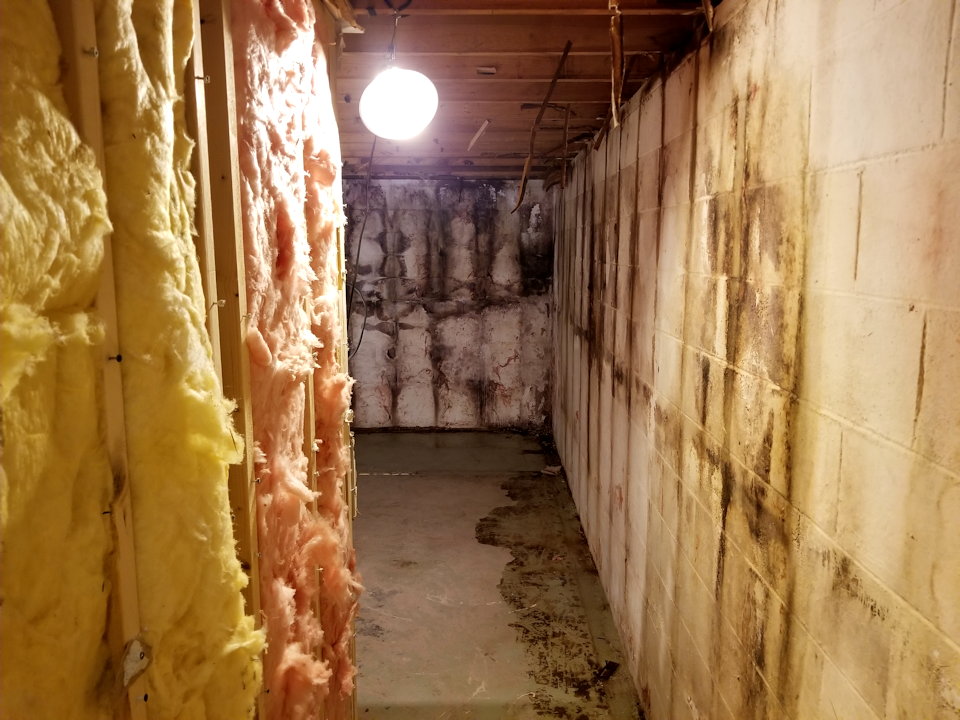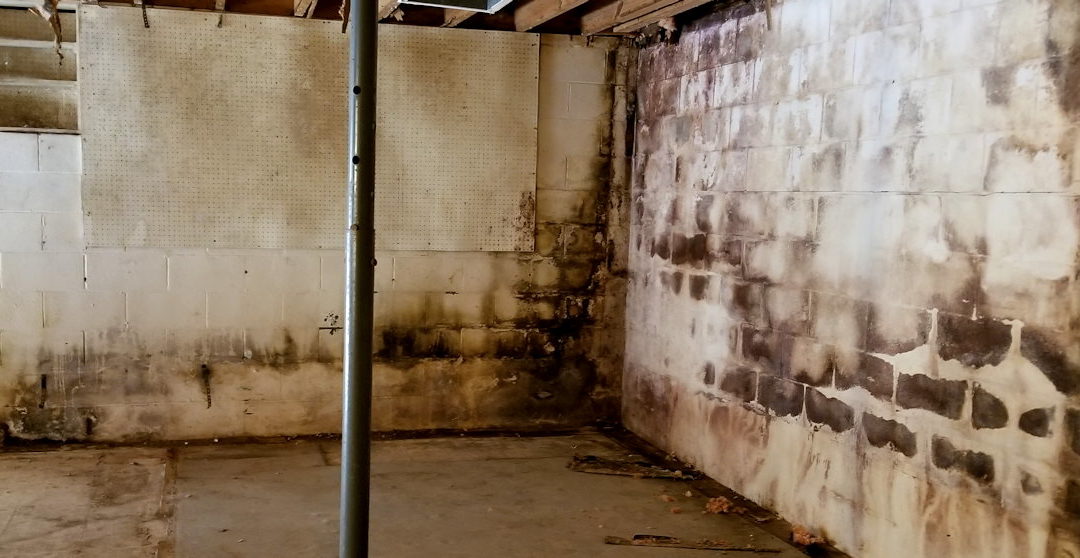Mold might be a common issue, but it’s unsightly and can even be dangerous to those living in the home. How do you deal with this pesky growth through mold remediation?

These shots, taken in the early stages of a recent project we’ve started, show the degree to which mold can spread all over walls and ceilings. In this case it even got into the insulation, which means all of it will have to be pulled out and replaced.
Black mold like this isn’t as easy to remove as taking a rough sponge to the walls. The discoloration even on brick and concrete is pretty resilient as stains go, so our team wore masks as we applied mold-resistant chemicals to thoroughly kill the mold and remove the residue.
Mold remediation is a slow and careful process.

At this stage of the project we completed the first round of bleach, and had to ventilate the area before we could progress further. This is part of what makes mold remediation one that requires expertise and careful planning.

During the next phase we’ll have to work on air scrubbing — that is, making sure there are no mild spores in the air. Otherwise, of course, the walls can look clean but the mold could resettle and return in a short time. We especially don’t want that to happen to the new insulation we’ll be installing.
The air scrubbing will be performed with industrial HEPA filters, which are the only type of filters fine enough to stop mold spores. After that’s complete the area will be safe to breathe, and safe to install new materials.


